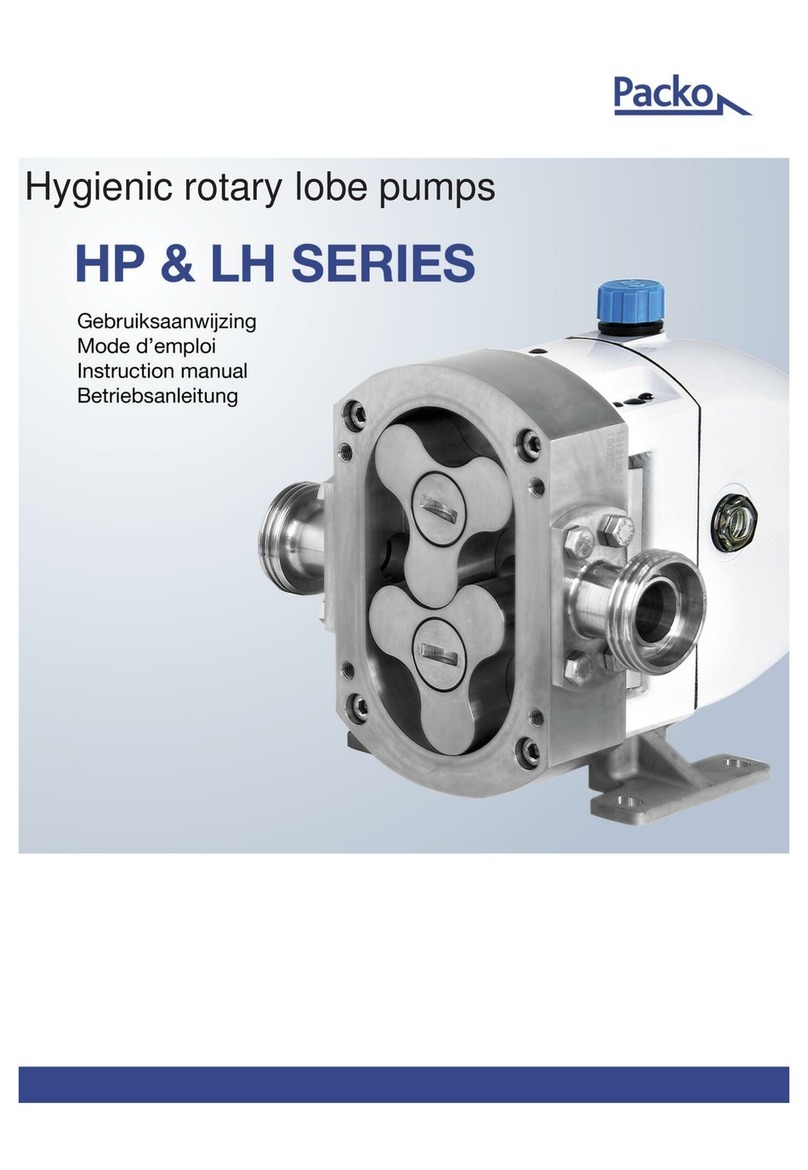
74
D. The maximum temperature for pumps with a
mechanical seal with carbon is 120°C.
When the pump is used for han-
dling liquids with a temperature
lower than 10°C or higher than
40 °C, the pump and piping bringing the liq-
uid to and away from the pump should be
protected against human contact, in this way
the operators or other persons cannot burn
themselves. The cooling of the motor must not
be affected by this protection.
When handling hazardous liquids, be
sure that the liquid does not affect the
seals and that the connections on
inlet and outlet of the pump are made leakage
free. When handling a toxic or odorant liquid,
ensure working area is well ventilated. Do not
allow dangerous liquids to ow into the local
sewage system or river systems when the pump
has a leak. Do not drain hazardous liquids such
as chemical solutions directly onto the ground.
Instead, drain such liquids into a suitable con-
tainer. When handling toxic or hazardous liquids,
contact PACKO to check whether the used seal-
ing materials are suitable for the liquid.
Never stand on a pump! The pump was not
designed and manufactured for this. The pump
could be damaged, and injury may occur.
When assembling, disassembling and
during installation and maintenance,
all engineers must wear safety
gloves, a helmet and protective shoes. In
addition, when handling wetted parts, always
wear protective goggles or a mask. Do not
smoke or eat during these operations. Hazardous
liquids may be on the pump parts. Damaged or
deteriorated tools are very dangerous and can
cause serious injuries.
Make sure the rope or chain used
for lifting the pump has suf cient
strength in relation to the weight of
the pump (see nameplate) and is not damaged.
It is strictly prohibited to stand underneath
a lifted or suspended pump. A falling pump
can lead to death or serious injury. Only lift a
pump as described in this manual. Make sure
your ngers are not caught between the pump
and rope or chain.
The motor should be connected to the
power supply in accordance with EN
60204 and local stan-
dards. An electric control panel and emer-
gency stop has to be foreseen according to
2006/42/EC.
Run the pump at the speci ed power supply
voltage on the nameplate of the motor only.
Otherwise, motor damage or electric shock may
result.
When the thermal protection of the motor is acti-
vated, switch off the main switch. Only switch it
on again when the reason for this interrup-
tion has been found and repaired.
When the electrical power has failed,
it may not be possible that the
pump restarts automatically when
the electrical power supply comes up again.
When restarting manually, check and make sure
that there is no one near the pump when switch-
ing on the power supply.
Only vertical cantilever pumps (suf x IM in the
pump code) are designed to be used under water.
Even with these pumps, the motor has to stand at
least 10 cm above maximum liquid level. These
pumps are always installed vertically. All other
pumps can never be used under water.
Provisions should be taken so that, in case of a
leakage of the installation, the level of the liquid
cannot rise to the level of the motor.




























